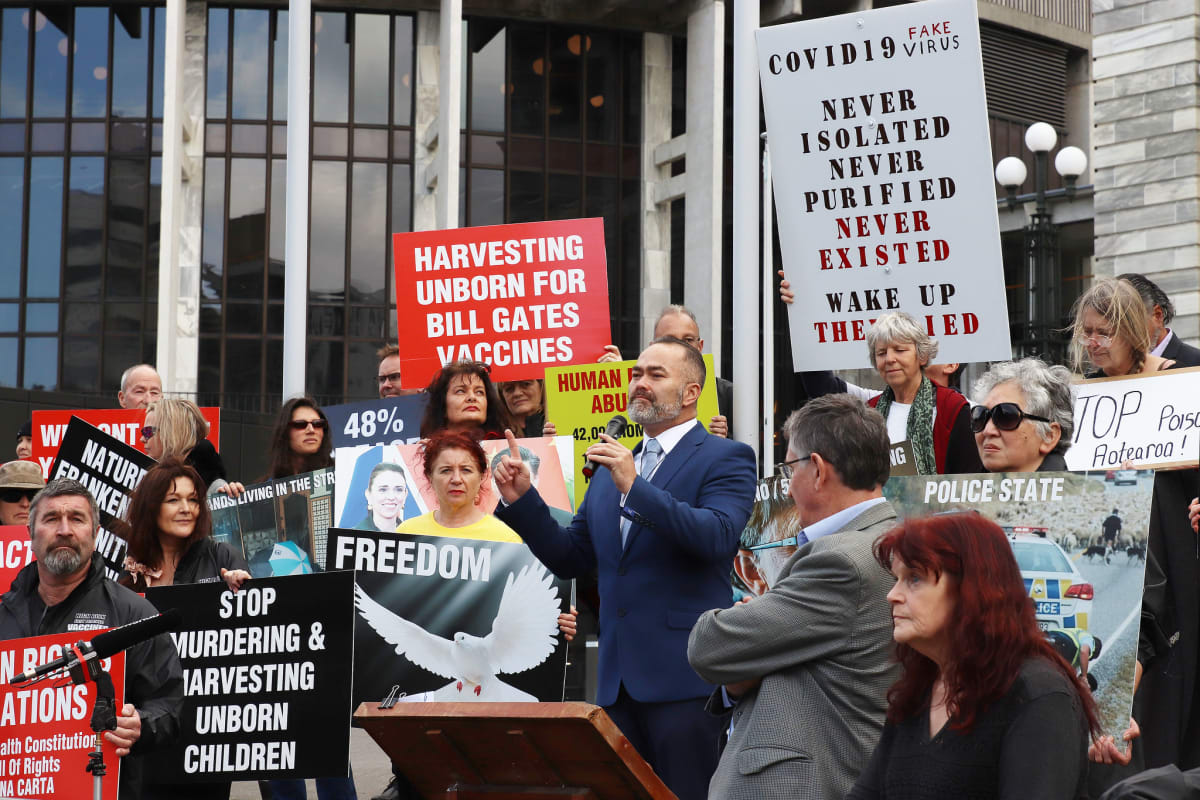As QAnon adherents and Donald Trump supporters stormed the US Capitol, officials in New Zealand kept a close eye on how our alt-right community was responding and sharing content
Government officials closely monitored the online activity of New Zealand’s alt-right community as their American counterparts stormed the US Capitol building, as part of new protocols developed following the Christchurch terrorist attack.
Officials have also shared concerns about the development of a “self-sustaining ecosystem” online for extremists which is harder for regulators and researchers alike to scrutinise.
The January riot in Washington DC, with thousands of Donald Trump supporters attempting to interrupt the certification of his electoral defeat by Joe Biden, attracted widespread condemnation – but also the careful attention of other countries keen to avoid a similar event, including New Zealand.
In a briefing to Internal Affairs Minister Jan Tinetti, obtained by Newsroom under the Official Information Act, the Department of Internal Affairs (DIA) detailed its efforts to monitor the online spread of content related to the Capitol storming – including among members of New Zealand’s alt-right and conspiracy-oriented communities.
The DIA’s digital safety group increased its monitoring of social media as footage of the riot circulated, saying that while much of it depicted violence – including the death of rioter Ashli Babbitt – it “fell short of the high threshold of being considered objectionable under New Zealand law”, a view shared by Chief Censor David Shanks.
The DIA implemented a monitoring roster to cover a roughly two-day period before and during the inauguration, but found little commentary on the inauguration within New Zealand or from people associated with white supremacist groups.
However, it raised concerns about a shift from mainstream social media platforms to so-called “alt-tech” sites which were less willing to comply with takedown requests from law enforcement.
‘A self-sustaining ecosystem’
In the wake of companies like Twitter suspending QAnon-related accounts and alt-tech site Parler being taken offline by web host Amazon, several New Zealand users had indicated they would move to Gab, a social network described by critics as a haven for extremists.
It was likely the alt-right community would develop a “self-sustaining ecosystem” as a result of the actions taken by companies following the Capitol storming, the DIA said.
“With extremists moving to alternative platforms, including some New Zealanders, their influence in mainstream forums may be reduced. However, it also poses a challenge for both researchers and regulators who monitor the conversations and networking in the extremist ecosystem.”
Analysis recently completed for the department suggested New Zealanders engaging with alt-right ideologies were deeply interested in American politics, with “a significant QAnon and conspiracy following” perpetuated by “influential figures” like Billy Te Kahika Jr.
It would be important to monitor how the pandemic and other events in the US linked through to New Zealand as political narratives converged, the briefing said.
“The violence of 6 January 2021 made clear the danger posed by conspiracy theories and the power of influential people with large online followings on big tech platforms … it is important for relevant public-sector agencies to remain aware and ready to respond to these trends.”
Byron Clark, a left-wing activist and video essayist who monitors the activity of far-right New Zealanders, said the analysis was not particularly surprising, with a small group of “alt-right influencers” taking their cues from the US and people like Te Kahika long having attracted QAnon-adjacent supporters.

While a move away from mainstream sites to alt-tech platforms would make it harder for researchers to monitor far-right internet users, Clark said it would also make it harder for them to grow their following.
“Most of their followers don’t go along with them [to new sites], so without that platform on mainstream social media they’re not reaching the same audience.”
Social media platforms needed to step up their efforts to address the issue, with a number of New Zealand-based QAnon and far-right social media accounts and pages still operating despite suspensions in the US and elsewhere.
Jared Mullen, the DIA’s digital safety director, told Newsroom the department had been given extra funding after the March 15 terror attack to increase its work on tackling objectionable and harmful content related to violent extremism.
It had hired new staff and “really beefed up” its intelligence and insights capabilities, allowing it to keep up with trends and commission research like its analysis of the state of online extremism in New Zealand.
DIA staff kept a watch on the public statements made on social media by high-profile Kiwis active in the conspiracy space, although its focus was on objectionable content rather than any public safety threat, which it would refer to police.
While the country did not have a disproportionate problem with QAnon adherents, the research showed that Kiwis were not immune from its influence, Mullen said.
“It’s never pleasing to know that a harmful conspiracy theory has taken root in your community, but it is better to know that you have some information about it and better to be monitoring and looking at ways that that can be productively addressed.”
The unrest over the inauguration had also allowed the DIA to further develop its “online crisis response process”, a set of protocols developed in the wake of March 15 to better coordinate how government agencies would respond to a similar event and provide a clear point of contact for ISPs and other technology companies.
Mullin said officials’ preference was to go directly to an internet platform or host and ask for objectionable content to be removed, asking law enforcement in the host country to make an approach if the initial contact was not successful.



